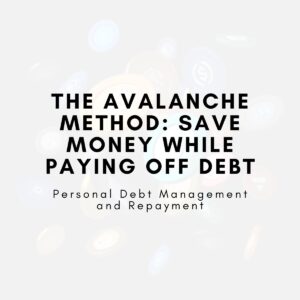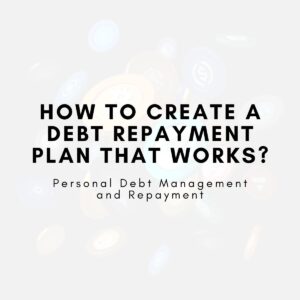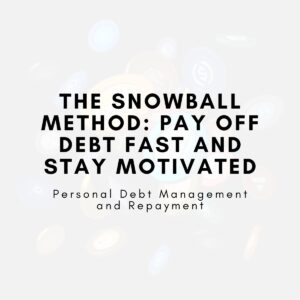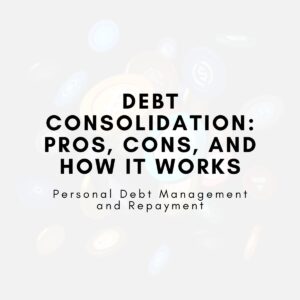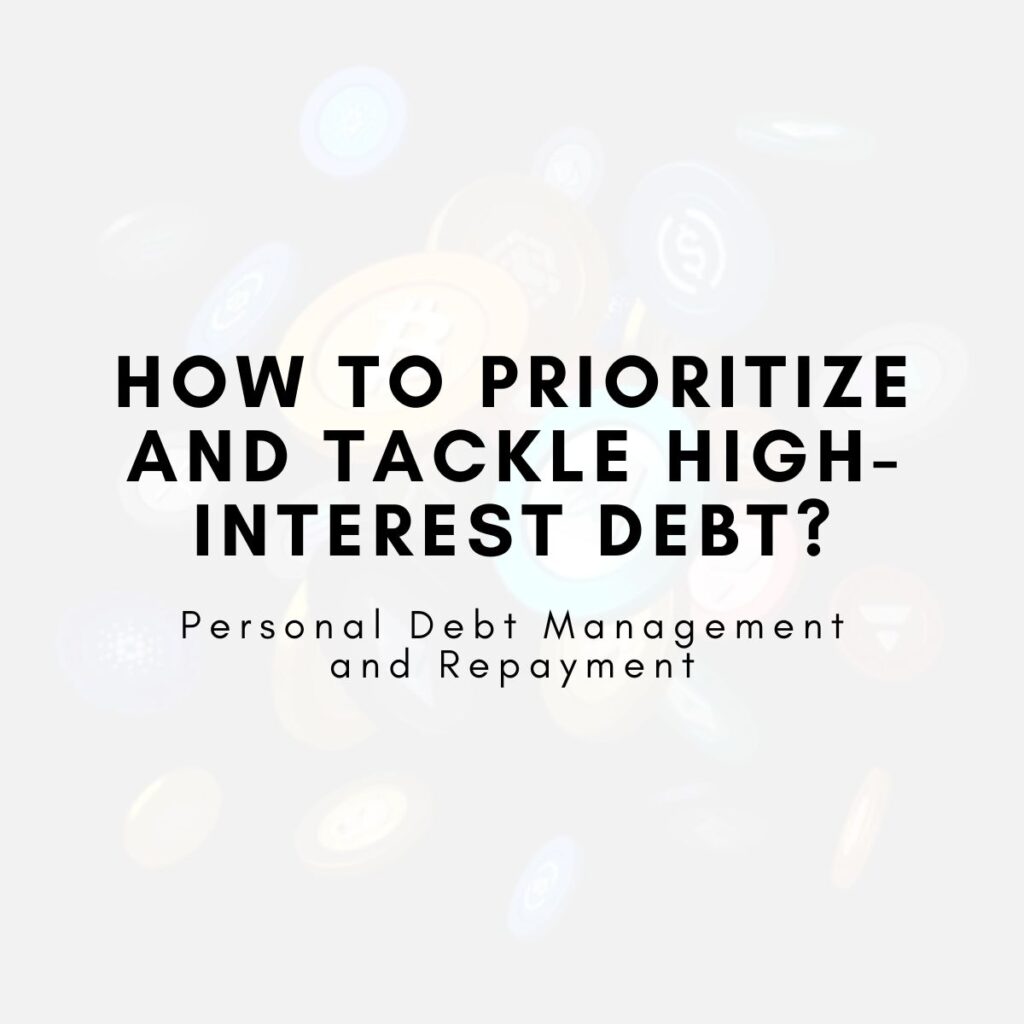
How can you prioritize and tackle high-interest debt?
Prioritizing and tackling high-interest debt is crucial for minimizing the overall amount of interest you pay and speeding up your journey to financial freedom. The key lies in identifying which debts are costing you the most and addressing them first. This guide will provide you with effective strategies and actionable steps to prioritize and eliminate high-interest debt, helping you save money and become debt-free more quickly.
Summary Table: How to Prioritize and Tackle High-Interest Debt
| Step | Action | Example |
|---|---|---|
| 1. Understand High-Interest Debt | Identify high-interest debts like credit cards and payday loans that cost the most. | A credit card balance of $5,000 at 20% interest versus a student loan at 4%. |
| 2. Create a Debt Inventory | List all debts, noting balance, interest rates, and minimum payments. | List: Credit Card ($5,000, 22%), Personal Loan ($10,000, 12%), Student Loan ($15,000, 6%). |
| 3. The Avalanche Method | Prioritize debts with the highest interest rate for repayment. | Pay off a $5,000 credit card at 22% first before focusing on a $10,000 personal loan at 12%. |
| 4. The Debt Snowball Method | Alternatively, prioritize the smallest debt to gain motivation, then move to the next smallest. | Start with a $2,500 debt, then move to the $5,000 credit card, then tackle the $10,000 personal loan. |
| 5. Refinancing or Consolidation | Consolidate multiple high-interest debts into a lower-interest loan for more manageable payments. | Consolidate $15,000 in credit card debt with 20% APR into a 10% APR personal loan, reducing total interest payments. |
| 6. Cut Back on Spending | Limit non-essential expenses and redirect savings to debt repayment. | Reduce dining out expenses from $200 to $50 per month and allocate the $150 savings toward debt repayment. |
| 7. Track Progress | Use apps or spreadsheets to monitor debt repayment progress. | Track progress with Mint or Excel and adjust payments when milestones are met. |
| 8. Set Milestones | Celebrate small victories to maintain motivation throughout the repayment process. | Celebrate paying off the first $2,000 of debt or clearing a high-interest credit card. |
| 9. Avoid Future High-Interest Debt | Build an emergency fund, stick to a budget, and pay off credit balances in full each month to prevent new debt. | Save $1,000 for emergencies, create a monthly budget, and pay credit card balances in full to avoid interest charges. |
| 10. Stay Consistent | Stay disciplined and committed to your debt repayment plan, focusing on progress over time. | Continue following your debt repayment plan, even if progress seems slow. Celebrate paying off debt in full after 18 months. |
This table provides a concise overview of the essential steps and examples for prioritizing and tackling high-interest debt using effective methods like the Avalanche and Debt Snowball strategies.
Introduction
High-interest debt, such as credit card balances or payday loans, can significantly hinder your financial progress. If you’re carrying multiple debts with varying interest rates, it may seem overwhelming to know where to start. However, prioritizing high-interest debt is essential for reducing the amount of money you lose to interest charges and accelerating your repayment journey.
In this post, we’ll walk you through the steps to prioritize and tackle high-interest debt, including proven strategies like the Avalanche Method and tips to stay motivated. By the end of this guide, you’ll have the knowledge and tools necessary to regain control over your finances and eliminate high-interest debt more effectively.
1. Understanding High-Interest Debt
Before diving into strategies for tackling high-interest debt, it’s important to understand what qualifies as high-interest debt and why it’s so critical to prioritize it.
What is High-Interest Debt?
High-interest debt refers to loans or credit balances that charge relatively high interest rates compared to other forms of debt. Common examples include:
- Credit card debt (typically 15% – 25% APR)
- Payday loans (often 300% APR or higher)
- Personal loans with high interest rates
Why You Should Prioritize High-Interest Debt?
When you carry high-interest debt, a significant portion of your payments goes toward paying interest rather than the principal balance. This means that the longer it takes to pay off your debt, the more you’ll pay overall. By tackling high-interest debt first, you minimize the impact of interest and reduce your total debt faster.
Example of High-Interest Debt Impact
Suppose you have a $5,000 credit card balance at 20% APR. If you make only the minimum payment of $100 per month, it could take you over 10 years to pay off the balance, and you’d end up paying nearly $5,000 in interest alone.
On the other hand, if you prioritize this debt and increase your monthly payments, you could pay it off in a shorter period, saving you hundreds or thousands of dollars in interest.
2. How to Identify and List Your Debts?
Identifying and listing your debts is the first crucial step in prioritizing them effectively. Here’s how you can get started:
Step 1: Create a Debt Inventory
Start by listing all your debts, including credit cards, personal loans, student loans, and any other outstanding balances. For each debt, note the following:
- The balance (how much you owe)
- The interest rate (APR)
- The minimum monthly payment
- The due date
Step 2: Organize by Interest Rate
Once you have all your debts listed, arrange them in order of their interest rates, from highest to lowest. This will help you understand which debts are costing you the most and should be prioritized first.
Example Debt List:
| Debt | Balance | Interest Rate (APR) | Minimum Payment |
|---|---|---|---|
| Credit Card #1 | $5,000 | 22% | $100 |
| Personal Loan | $10,000 | 12% | $150 |
| Credit Card #2 | $2,500 | 18% | $75 |
| Student Loan | $15,000 | 6% | $200 |
3. The Best Strategies to Tackle High-Interest Debt
Now that you’ve identified your debts, it’s time to take action. Below are the most effective strategies for prioritizing and tackling high-interest debt.
1. The Avalanche Method
The Avalanche Method is a debt repayment strategy that prioritizes paying off high-interest debts first while making minimum payments on all other debts. By focusing on high-interest debts, you reduce the total interest you pay over time.
How It Works?
- List your debts from highest to lowest interest rate.
- Allocate any extra funds to the highest-interest debt.
- Once the highest-interest debt is paid off, move on to the next highest-interest debt.
Example of Using the Avalanche Method:
If you have a $5,000 credit card debt at 22% interest, a $10,000 personal loan at 12%, and a $2,500 credit card debt at 18%, you would focus on paying off the $5,000 credit card debt first, then move on to the $2,500 credit card debt, and finally tackle the $10,000 personal loan.
2. The Debt Snowball Method (Optional)
While the Avalanche Method is the most cost-effective way to tackle debt, some people prefer the Debt Snowball Method. This approach focuses on paying off the smallest debt first, giving you quick wins and boosting your motivation.
How It Works:
- List your debts from smallest to largest balance.
- Pay off the smallest debt first, then move on to the next smallest, and so on.
Example of Using the Debt Snowball Method:
If you have a $5,000 credit card debt, a $10,000 personal loan, and a $2,500 credit card debt, you would pay off the $2,500 credit card debt first, then tackle the $5,000 credit card debt, and finally focus on the $10,000 personal loan.
3. Refinancing or Consolidation
If you have multiple high-interest debts, consolidating them into a single loan with a lower interest rate could help you save money on interest. By refinancing your debt, you may be able to lower your monthly payments or reduce your interest rate, allowing you to pay off the debt more quickly.
Example:
If you consolidate your $10,000 debt with an interest rate of 18% into a personal loan with a 10% interest rate, you will pay less interest over time and reduce your monthly payments.
4. Cut Back on Non-Essential Spending
While working to pay off high-interest debt, it’s essential to cut back on non-essential spending. Redirect the money you save toward paying off your debts.
Example:
If you typically spend $200 a month on dining out, consider reducing it to $50 and use the remaining $150 to pay off your debt faster.
4. Staying Motivated During Debt Repayment
Paying off high-interest debt can be a long and challenging process, but staying motivated is crucial for success. Here are some tips to help you stay on track:
1. Set Milestones and Celebrate Achievements
Breaking your debt repayment process into smaller milestones can help you stay motivated. For example, celebrate when you pay off a certain percentage of your debt, or when you clear a particular debt.
2. Track Your Progress
Use debt-tracking apps or a simple spreadsheet to monitor your progress. Seeing the reduction in your debt over time will motivate you to keep going.
3. Find Support
Consider joining an online debt repayment community or sharing your progress with a friend. Having support can make the process feel less overwhelming.
5. How to Avoid High-Interest Debt in the Future?
While prioritizing high-interest debt is important, it’s also essential to avoid accumulating new high-interest debt. Here are some strategies to prevent future debt:
1. Build an Emergency Fund
Having an emergency fund can prevent you from relying on credit cards or payday loans when unexpected expenses arise.
2. Create and Stick to a Budget
A budget can help you manage your finances more effectively, preventing overspending and reducing the likelihood of accumulating high-interest debt.
3. Pay Off Balances in Full
Whenever possible, pay off your credit card balances in full each month to avoid interest charges.
Conclusion
Prioritizing and tackling high-interest debt is a crucial step in achieving financial freedom. By focusing on paying off high-interest debts first, you can save money on interest and accelerate your journey to becoming debt-free. Use the Avalanche Method or other strategies to structure your repayment plan, and stay motivated by celebrating milestones along the way. With dedication and discipline, you can take control of your finances and reduce the burden of high-interest debt.
Key Takeaways
- High-interest debt, such as credit cards and payday loans, should be prioritized to save money on interest.
- Use the Avalanche Method to focus on paying off high-interest debts first.
- Consider using the Debt Snowball Method for psychological wins, although it may cost more in interest.
- Consolidating or refinancing high-interest debts can reduce the total interest paid.
- Stay motivated by setting milestones, tracking progress, and finding support.
- To avoid future high-interest debt, build an emergency fund, create a budget, and pay off balances in full.

